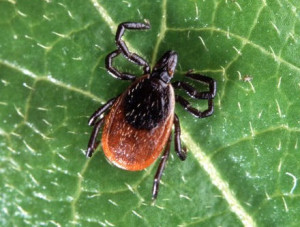
With more people spending time outdoors, the chances of tick bites are ever increasing.
May is Lyme Disease Awareness Month and Greene County Medical Center Doctor of Nursing Practice Diana Smith with Greene County Family Medicine Clinic tells Raccoon Valley Radio Lyme Disease is transmitted to humans through the ticks that are commonly found in Iowa. She says ticks are mostly found in wooded and brushy areas and one of the main signs of a tick bite is a bullseye style red rash. The symptoms of Lyme Disease can include arthritis, paralysis of facial muscles, and neurological and cardiac issues.
Smith explains that ticks can be removed by simply using tweezers.
“So to do that, you should carefully grab the tick, using the tweezers, near their mouth parts where they enter the skin. You pull back very steadily and very slowly away from the skin so that the tick will back itself out. Afterwards you want to make sure you clean the wound and disinfect the site.”
Smith points out ways to prevent ticks from biting you include wearing long sleeve shirts and pants, tucking pant legs into socks, using insect repellent that contains DEET and other insect repellent with permethrin. She suggests that if you spend time in a wooded area to also do daily checks for ticks in places where they can hide, such as backs of knees, hair, armpits, bellybuttons, ears and the groin. Smith adds to also check your furry friends for ticks.
“Having animals that are inside your home that also go outside is one of the easiest ways to bring a Lyme Disease carrying tick into your home.”
Smith says the Centers for Disease Control and Prevention reports about 20,000-30,000 cases of Lyme Diseases are documented annually across the country, but the CDC believes there are close to 400,000 cases, with most of them not being reported. She advises that if you have been bitten by a tick and have one of the symptoms of Lyme Disease to contact your healthcare provider or seek medical attention.

